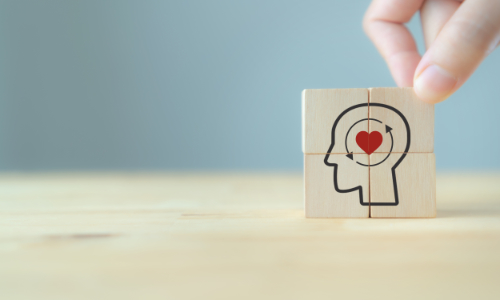
Have you ever wondered why you feel happy when you’re hanging out with friends or scared when watching a spooky movie? All of those feelings—like joy, fear, sadness, and excitement—are created in your brain. But how exactly does your brain make emotions? Let’s break it down.
The Brain is Like a Control Center
Your brain is kind of like a super powerful computer that controls everything in your body, including your emotions. When something happens around you (like hearing a funny joke or seeing something scary), your brain reacts and sends signals to the rest of your body to create feelings. Different parts of the brain work together to make these emotions happen.
Here are the main players when it comes to emotions:
The Limbic System: The Brain’s Emotion Center
The limbic system is a group of brain structures that play a big role in controlling emotions. Two important parts of the limbic system are:
Amygdala: This tiny part of your brain is like an alarm system for your emotions. When you feel scared, nervous, or even excited, it’s because your amygdala is reacting to what’s happening around you. It helps you stay safe by warning you when something seems dangerous (like when you hear a loud noise in the dark).
Hippocampus: The hippocampus is like the brain’s memory keeper. It helps you remember things that have happened in the past. Why is this important for emotions? Well, when something happens that reminds you of an experience, your hippocampus helps your brain figure out how to feel. For example, if you had a lot of fun on a roller coaster last summer, just thinking about going again might make you excited!
The Prefrontal Cortex: The Brain’s Thought Manager
The prefrontal cortex is the part of your brain that helps you think through things and make decisions. It’s like the brain’s “manager” that keeps your emotions in check. When you feel angry, for example, your prefrontal cortex helps you decide not to yell or act out, even though you might feel like it.
It also helps you balance your emotions. If your amygdala is telling you to be super scared because you heard a strange noise at night, your prefrontal cortex can step in and remind you, “It’s probably just the wind” or “Maybe it’s just the cat knocking something over.”
Neurotransmitters: The Brain’s Messengers
To create emotions, your brain sends out tiny chemical messengers called neurotransmitters. These neurotransmitters travel between different parts of the brain to trigger feelings. Some important ones are:
Dopamine: This is the “feel-good” neurotransmitter. When something fun or rewarding happens, like getting a high score in a game or eating your favorite food, dopamine is released, making you feel happy and excited.
Serotonin: This one helps with mood balance. When your serotonin levels are just right, you feel calm and content. If you’re feeling down or grumpy, it could be because your brain doesn’t have enough serotonin at the moment.
Adrenaline: Ever felt a rush of energy when you’re scared or super excited? That’s adrenaline kicking in. It’s your brain’s way of preparing your body to react quickly, like when you have to run away from danger or cheer loudly for your favorite team.
How Emotions Work Together
Your brain doesn’t just create one feeling at a time. Emotions can be mixed! For example, when you’re about to try something new, like a big jump on a skateboard, you might feel both excited and nervous. That’s because different parts of your brain are reacting at the same time, creating a blend of emotions.
Why Do We Have Emotions?
Emotions are super important because they help us survive and connect with other people. Long ago, emotions like fear helped people stay safe by warning them of danger. Today, emotions still help you avoid danger, but they also help you understand yourself and others better. For example:
- Fear: Keeps you away from danger (like staying away from a cliff).
- Happiness: Helps you enjoy life and bond with others.
- Anger: Lets you know when something is wrong, so you can try to fix it.
Can You Control Your Emotions?
While you can’t stop your brain from creating emotions, you *can* learn to manage them. Remember the prefrontal cortex? It helps you think about your emotions and choose how to react. For example, if you feel mad because someone teased you, instead of yelling back, you can take a deep breath and decide to ignore them or tell an adult. The more you practice thinking about your emotions, the better you’ll get at controlling them!
Your brain is always working, creating emotions based on what’s happening around you. The amygdala, hippocampus, and prefrontal cortex are the key players in this process, and neurotransmitters help carry the messages that make you feel happy, sad, scared, or anything else.
Understanding how your brain creates emotions can help you be more aware of your feelings and even learn to handle them better. Pretty cool, right? So the next time you feel something strong, remember—it’s just your brain doing its job.
See how a Modern Observer Group coach can help you understand how you work best. Schedule a call here or contact us at the information below. Modern Observer Group programs are based on the Businetiks system as detailed in the book, “The Businetiks Way.”

